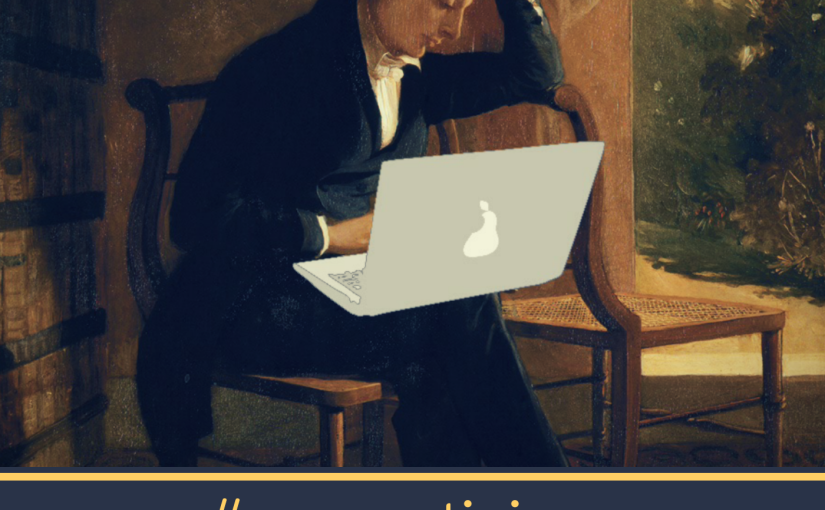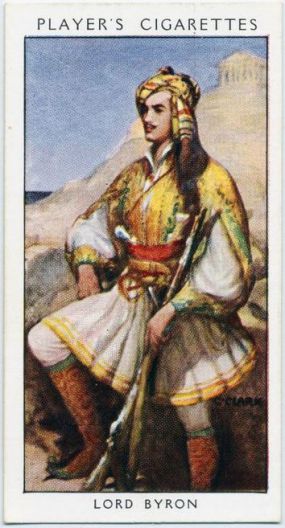John Keats was a brilliant poet and a darling of the Romantic age and whilst his legacy has been somewhat eclipsed by the formidable shadow of Lord Byron, many snippets from his works have slipped into common usage. For example “A thing of beauty is a joy forever’, that was his, it’s from a poem called Endymion. I’m not sure how many people are aware of its origin, I certainly wasn’t until I stumbled across the poem in a collection in my high school library.
Today I follow The Keats Letters Project, The Keats Shelley Society and The Keats Foundation on Twitter and daily, depending on the congestion of my feed, I often get a random daily dose of Keats.

In this post, I’m going to focus on the works of the Romantics and the place they have posthumously found within social networks such as Twitter and Facebook. The titular ‘#romanticism’ will immediately bring up results for an ocean of tweets of the work of the great romantic painters, including the works of Dante Gabriel Rossetti (pictured) generally tweeted by accounts that identify as the artist’s name such as John Everitt Millais @artistmillais.
Rebellious and subversive poets such as Samuel Taylor Coleridge & Percy Bysshe Shelley never lived to see their writing form become old hat. There was no possibility that they could comprehend moving from romanticism to modernism, modernism to postmodernism and so on. The likes of Shelley, Byron and Keats have drifted in and out of favour and in this age of social media we might expect that these tired authors might be firmly relegated to history. But then came social media and literature nerds like myself and countless others are consistently brushing off the metaphorical dusty pages, canvasses and plates to not only digitise but memorialise and adapt pieces of the Romantic movement. Below is one of my tweets using the #romaniticism hashtag to share an edited image from a literary annual featuring works of Romanticism for young ladies to promote my podcast that talks about a work of Romanticism by Mary Shelley, one of the great authors of the Romantic movement. And that my friend is convergence.
Vast quantities of books from the Romantic period have been digitised by libraries and archives, they have been transcribed by volunteers at Project Gutenberg and read by volunteers at Librivox. That information or the books they are derived from is then used by others to write blogs, record Youtube videos, make podcasts and create those very pretty and ambiguous inspirational quotes.

All or most of these creations are shared on social media. But none of this happens without the human desire to make mediums collide and take their experience of a text into a different realm. These sharable, likeable and Tweetable formats that we squeeze these often weighty, sometimes iconic texts and images may have the effect of diminishing the work, but it can also have the effect of adding to rather than subtracting from the narrative of the artefact; that is it can make a static piece of art into something that living, morphing and consistently reimagined. Ross & Sayers (2014) highlight the way that modernist texts can become alive through social media and other internet-mediated discourse and a similar argument could be applied to the preceding Romantic movement.
As Wright suggests in ‘Battle of the Books’ (2009) this new digitisation of literature means that ‘the book is becoming a fluid entity that can flow into a number of vessels’ and the same is true of poetry and art. The appeal of these particular works of the Romantic period is surely due in no small measure to their status in the public domain, leaving these iconic works that helped pave the way for western cultural heritage as we know it freely available for anyone to read, dissect and reimagine.

As Wright suggests in ‘Battle of the Books’ (2009) this new digitisation of literature means that ‘the book is becoming a fluid entity that can flow into a number of vessels’ and the same is true of poetry and art. The appeal of these particular works of the Romantic period is surely due in no small measure to their status in the public domain, leaving these iconic works that helped pave the way for western cultural heritage as we know it freely available for anyone to read, dissect and reimagine.
Listen to a quick podcast on Romantic Gothic literature, impermanence and Percy Bysshe Shelley
References
- Jenkins, H 2006, Convergence Culture: Where Old and New Media Collide, NYU Press, New York, USA.
- Keats, J 1818, Endymion, British Library, retrieved 26th July 2018, <https://www.bl.uk/collection-items/first-edition-of-keatss-endymion>.
- Romanticism, Oxford English Dictionary, Oxford University Press, Retrieved 26th July 2018, <https://en.oxforddictionaries.com/definition/romanticism>
-
Ross, S & Sayers, J 2014, ‘Modernism meets digital humanities’, Literature Compass, vol. 11, no. 9, pp.625-633.
- Wright, A 2009, ‘The battle of the books’, The Wilson Quarterly (1976-), vol. 33, no. 4, pp.59-64.
Images
- “Portrait of John Keats” by Joseph Severn, 1821, Retrieved from the National Portrait Gallery.
- “Laptop” by Bonzo, Open Clip Art under CC BY 1.0.
- “Joan of Arc” by Dante Gabriel Rossetti, 1882, Retrieved from Wikimedia Commons, Public Domain.
- “Now it’s your turn…” by Michael Coghlan under CC BY 2.0, Flickr.
- “Beauty is truth, truth beauty; that is all ye know on earth and all ye need know. – John Keats” by Kate Ter Haar is licensed under CC BY 2.0,
- “ebook” by Daniel Sancho is licensed under CC BY 2.0
- The “Ozymandias Collossus”, Ramesseum, Luxor, Egypt by Charlie Phillips is licensed under CC BY 2.0
Music
- Evermore by Kai Engel is licensed under an Attribution License 3.0 License.
- Kelli’s Number by U.S. Army Blues is licensed under a Public Domain 1.0 License.


 The Fragment
The Fragment


